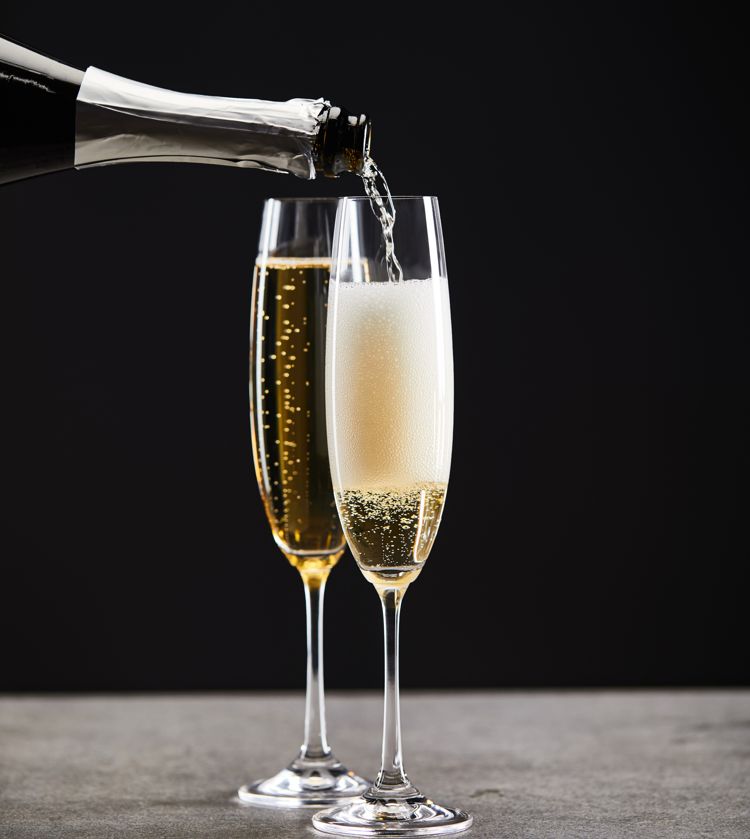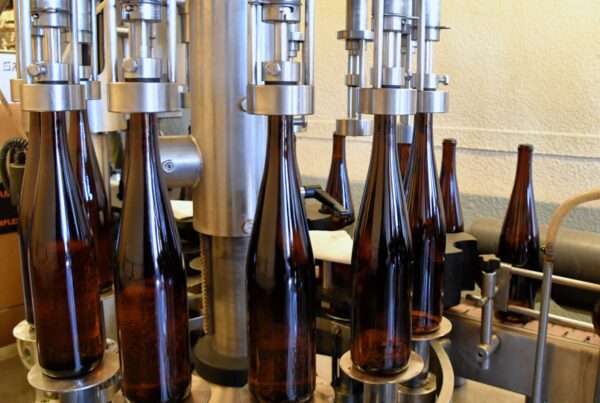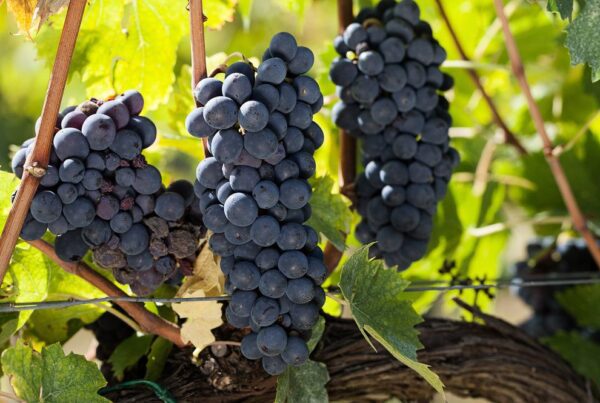Cava is a sparkling wine (white or rosé) from Spain. The word ‘Cava’, which means cave or cellar, comes from the early days of Cava production when caves were used for the preservation or aging of wine.
The Macabeo, Parellada and Xarel·lo are the most popular and traditional grape varieties for producing Cava.

How is Cava wine made?
It is made using the traditional method. The traditional method is the same process used in the Champagne region of France to produce Champagne.
In Champagne, the traditional method is known as the méthode champenoise. Champagne producers successfully lobbied the European Union to restrict the use of that term within the EU only to wines produced in Champagne.
Cava and other sparkling wines (like Crémant), therefore, cannot use the term méthode champenoise. Instead, the term traditional method (méthode traditionnelle) or the local language equivalent is used.
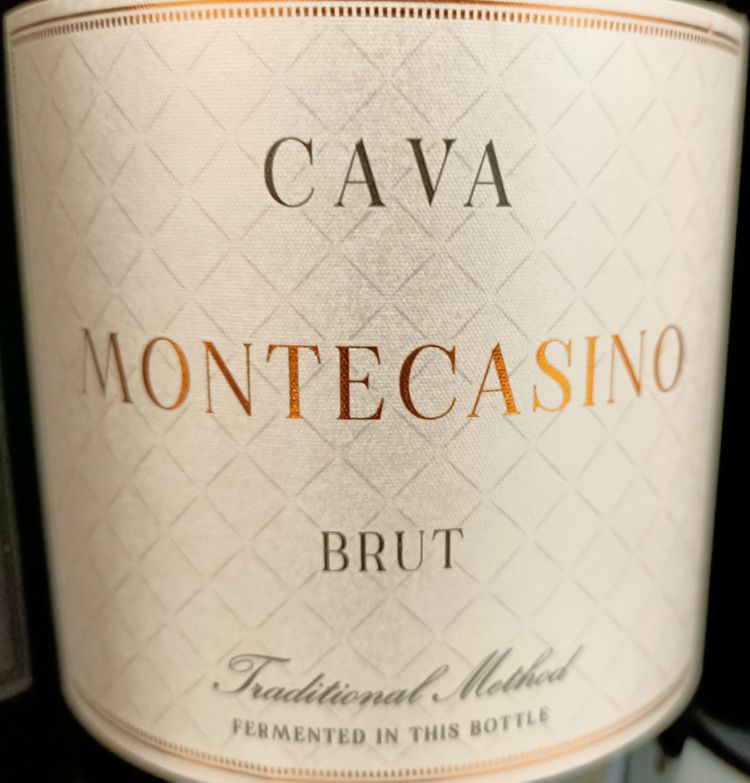
What is the traditional method?
The traditional method is both labour and cost intensive, it is only viable for high-end sparkling wines. Wines made using the traditional method are fermented twice.
First fermentation
The first fermentation begins in the same way as any wine, converting the natural sugar in the grapes into alcohol while the resultant carbon dioxide is allowed to escape. This produces a still, dry base wine.
Second fermentation
The base wine is then blended with other wines. These can be from different vintages or varieties.
The blended wine is put in bottles along with yeast and a small amount of sugar, stopped with a crown cap or another temporary plug, and stored in a wine cellar horizontally for a second fermentation.
During second fermentation, the wine increases slightly in alcohol and the carbon dioxide, which cannot escape from the sealed bottle, becomes dissolved in the wine. This is what creates the sparkle.
During the fermentation process, the dead yeast cells form a sediment in the bottle which is called ‘lees’. The fermentation process is followed by a period of ageing, during which the lees slowly release flavors into the wine.
This process is known as yeast autolysis (self-digestion). The yeast autolysis creates many of the unique flavors found in sparkling wines (bread, biscuit, toast etc.)
The yeast is disgorged (removed) after nine months and a varying amount of sugar added. Modern automated disgorgement is done by freezing a small amount of the liquid in the neck and removing this plug of ice containing the lees.
Where is it made?
Almost all Cava, about 95%, is produced in the Penedès area in Catalonia, Spain.
Cava is also produced in other villages in Aragon, Castile and León, Extremadura, La Rioja, Basque Country, Navarre and Valencia.
What does Cava taste like?
Cava is a balanced and fruity sparkling wine. Like any other quality sparkling wine, Cava is produced in varying levels of sweetness, ranging from dry to sweet.
Different styles or types of Cava
Cava is labeled according to the amount of sweetness added to the wine at bottling, in terms of grams per liter of sugar (g/l). Most Cava is dry.
- Brut Nature: 0-3 g/l
- Extra Brut: 0-6 g/l
- Brut: 0-12 g/l
- Extra Seco (Extra Dry): 12-17 g/l
- Seco (Dry): 17-32 g/l
- Semi-Seco (Semi-Dry): 32-50 g/l
- Dulce (Sweet): 50+ g/l
Sweetness levels in sparkling wines for the EU / Champagne dryness scale
The EU has labelling terms to denote sweetness levels that must be used for sparkling wines, including Champagne.
Many of these labelling terms are copied or are similar around the world. They are a good indication of sweetness levels, but the labelling terminology may differ depending on where you are.
It is worth noting that there is a range within each level, so producers may be on the lower or higher end of these ranges.
The terms ‘brut’ and ‘sec’ mean dry, but as you can see from the infographic below, even sparkling wines on the higher end of the sweetness scale can contain these terms.
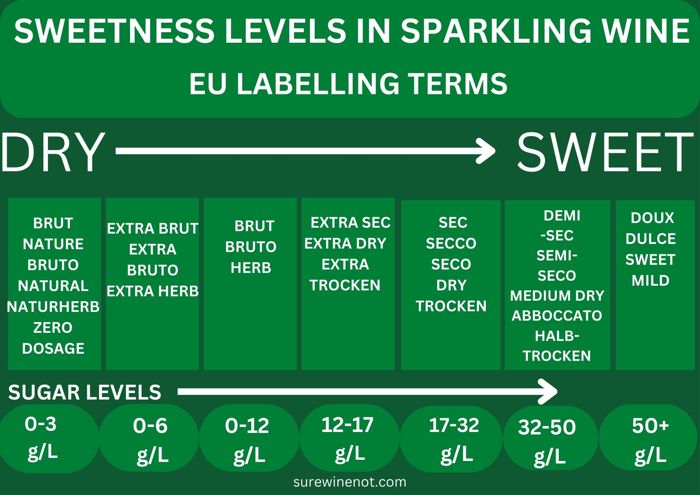
Opening a bottle of Cava wine
Finally, opening sparkling wines like Cava can be something of an art. So, ensure that you know how to open Champagne and sparkling wines safely and quietly.


